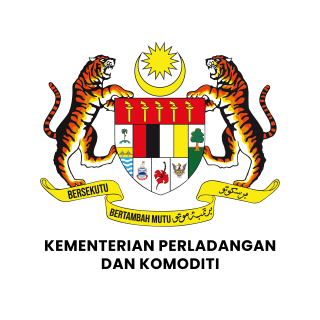
MEDIA RELEASE
STATEMENT FROM YB TERESA KOK, MINISTER OF PRIMARY INDUSTRIES PALM OIL IS THE BEST AGRI-COMMODITY CROP FOR MALAYSIA
Tun Daim was yesterday quoted by the Malay Mail in his report, “No future for palm oil, but coconuts is a possibility”, which I view with much concern. My opinion is that both the oil palm and coconut cultivation which are highly appropriate for our climatic conditions have their respective roles in our environment. When properly managed these could prove complimentary to each other in many ways.
Nevertheless, there is a good reason why Palm oil is still the best agri-commodity for Malaysia. The industry contributed 4.5% to the Malaysian Gross Domestic Product (GDP) and RM67.5 billion or 52.8% of export earnings to the country in 2018.
Our historical venture into this commodity speaks for itself. Under Tun Abdul Razak’s premiership, the nation turned towards oil palm cultivation to address rural poverty. We have never turned back and this golden crop has performed admirably, salvaging our economy many times over. The industry itself benefited through a planned infrastructure support paid by the government that in reality allowed us to achieve our current status as a leading producer and exporter of palm oil.
Today, I agree that the nation’s smallholders are stressed due to lower returns from their small plots of land and we need to take corrective actions quickly. Historically the original smallholders, especially those provided land under several schemes such as FELDA and FELCRA, tended to their crops on their own or with their immediate family’s assistance.
Any income generated, less inputs, was theirs to keep and this elevated their living standards tremendously. The nation simultaneously witnessed many sons and daughters of these smallholders graduating from local and foreign universities to take up key positions in all walks of our Malaysian life.
As many among the original smallholders have aged and their children are less inclined to tend their land, they have effectively become absentee landlords leasing their lands to others. This also means that income generated is split between parties and less is received by the smallholders themselves.
On top of this productivity losses among smallholders are common. The current nationwide MSPO certification is helping to address some of these challenges and we hope overall income will rise in tandem with global palm oil commodity prices.
Tun Daim has rightly pointed out that the future for palm oil hinges upon creating more food demand, through diversification of applications and new product innovations. Curiously, experts in the oils and fats fraternity tell us that new product innovations with any oil or fat is actually becoming more far and wide but regular inter oil substitutions is highly possible.
The good thing for palm oil is that global supply and demand dynamics are in a very tightly balanced platform. Coupled to this we have an ever growing global population especially in developing countries that demands more oils and fats for food consumption. Palm oil as the most cost effective oil will continue to play a pivotal role and it is hard to imagine a scenario wherein it can be replaced by other oils including coconut for its pricing, functionality and versatility.
We simply need to pay greater attention to our current cultivation and processing practices. For small holders replanting with higher oil yielding varieties is a better choice forward. My Ministry has been encouraging smallholders to practise inter-cropping with other crops that fetch high prices. These could include pineapples, coconuts, vegetables, as well as animal husbandry to diversify their income sources. They won’t be so affected when the palm oil price is low.
Malaysian coconut cultivation has over the years being neglected and it is common for us to drive along coastal roads to see such neglect in rural communities. In agreeing partially with Tun Daim, I would like to propose coconut cultivation in such areas be revitalized using high yielding short dwarf coconut palms.
Lest we forget, I would also draw attention to the fact that the palm oil industry also produces palm kernel oil from the kernel of the oil palm fruit. This for all purposes duplicates the functionality of coconut oil and is highly in demand. Should Malaysia venture into a targeted coconut oil cultivation program, I can assure you that it will also be welcomed by our palm oleochemical industries.
The bottom line to these suggestions is that we can actually make both crops work for our smallholders and economy. It could simply be a question of maximizing our land use patterns and see no reason to aggressively switch away from oil palm cultivation. The demand for the oil is quite assured.
Furthermore my ministry is enforcing new policies such as capping the total oil palm cultivated area to 6.5 million hectares; stop new planting of oil palm in the peatland; ban the conversion of forest reserved areas for oil palm cultivation and open up oil palm plantation maps available for public access. The future or palm oil is through its sustainable production traced throughout its supply chain. I would also be bold to suggest that such sustainability standards would also likely be demanded for coconut oil in the future. I would thus disagree with the quote from Tun Daim but rather say that there are various opportunities and good prospects for both palm and coconut in our country, provided we sustainably manage these supply chains.
YB TERESA KOK
MINISTER OF PRIMARY INDUSTRIES
28 NOVEMBER 2019






